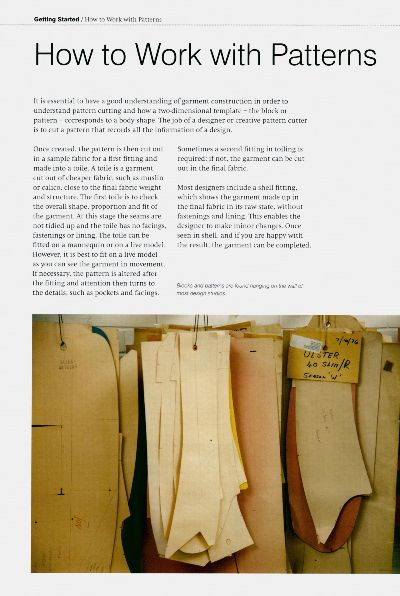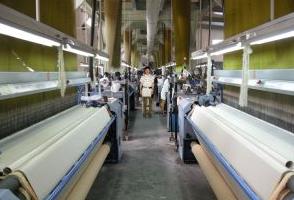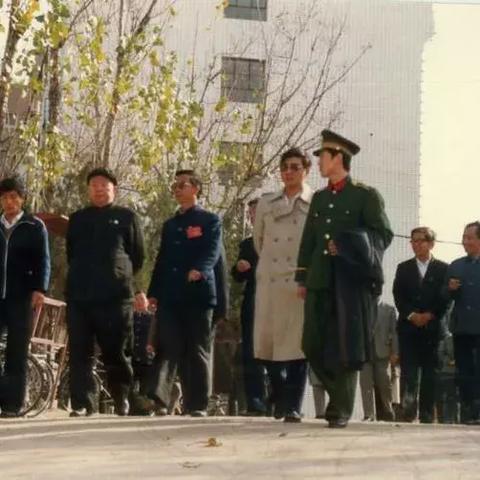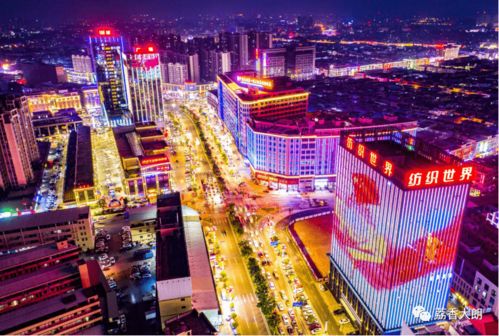The Comprehensive Workflow of a Textile Factory
Introduction: In the textile industry, every step plays a crucial role in the production process. From raw materials to finished products, there's a specific workflow that ensures high-quality textiles are produced efficiently. This guide will walk you through the key stages of the textile factory work process, highlighting the importance of each step and how it contributes to the overall success of the company.
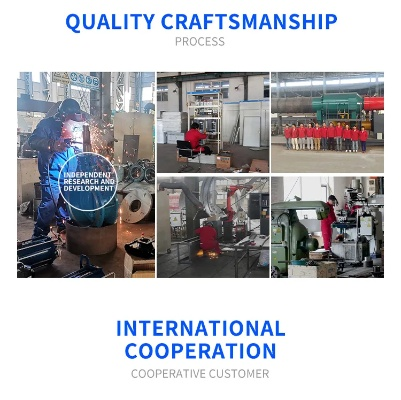
Step 1: Preparation of Raw Materials Before any production begins, the first step is to prepare the raw materials. This involves selecting the right yarn, fibers, and fabrics that will be used in the manufacturing process. The selection process is crucial as it determines the quality of the final product. For example, if a company chooses to use polyester yarn for their sweatshirts, they must ensure that the yarn is of high quality and meets all safety standards.
Step 2: Weaving or Knitting Once the raw materials are ready, the next step is weaving or knitting. This process involves interlacing the yarns to create a continuous fabric. In the case of weaving, the warp threads are laid out on a loom while the weft threads are inserted into the gaps between the warp threads. On the other hand, in the case of knitting, the individual stitches are formed by pulling the needle through the loops on the circular bobbin. Both processes require skilled workers who can follow precise instructions to produce high-quality textiles.
Step 3: Dyeing or Printing After the fabric has been woven or knitted, it needs to be dyed or printed with patterns and designs. This step is essential as it adds color and texture to the fabric. In some cases, the dye may need to be applied multiple times to achieve the desired effect. For instance, a company might use two dye baths to achieve a gradient effect on a t-shirt.
Step 4: Finishing After the dyeing or printing process, the fabric needs to undergo finishing steps such as pressing, steaming, and finishing treatments. These processes help to enhance the appearance of the fabric and make it more durable. For example, a company might apply a protective finish to prevent fading and wear and tear.
Step 5: Packaging and Shipping Finally, once the textiles have been processed and finished, they need to be packaged and shipped to their intended destination. This step is crucial as it ensures that the products reach their customers in good condition. A company might use specialized packaging materials to protect the fabric during shipping.
Case Study: One example of a successful textile factory work process is the case of a leading manufacturer of sportswear. The company uses a comprehensive workflow that starts with high-quality raw materials like polyester yarn and spandex. The yarn is then woven into a seamless fabric using state-of-the-art machinery. During the dyeing stage, the company applies two different dyes to achieve a vibrant color gradient on the jerseys. After finishing, the garments undergo a thorough inspection process to ensure they meet all safety standards. Finally, the products are packed in custom-designed boxes and shipped directly to retailers worldwide.
Conclusion: The textile factory work process is a complex and meticulous process that requires careful planning and execution. By following a comprehensive workflow, companies can produce high-quality textiles that meet the needs of their customers. From raw material preparation to packaging and shipping, every step plays an important role in ensuring the success of the company. With proper training and guidance, workers can master these processes and produce exceptional products that stand out from the competition.
纺织厂打工概述
在纺织厂打工,是一个充满挑战与机遇的过程,本篇将为您详细介绍纺织厂打工的流程,包括所需步骤和注意事项,通过案例分析,帮助您更好地了解纺织厂打工的实际操作。
纺织厂打工流程
前期准备
a. 了解工厂规章制度 在进入纺织厂之前,需要了解工厂的规章制度,包括工作时间、工作内容、劳动纪律等。
b. 准备相关证件 根据工厂要求,可能需要准备身份证、学历证明等相关证件。
c. 了解工作环境 了解工厂的工作环境,包括车间布局、设备设施等。
入职流程
a. 填写入职申请表 根据工厂要求,填写入职申请表并提交相关证件。

b. 面试与背景调查 工厂会进行面试和背景调查,以确认员工的身份和资格。
c. 签订劳动合同 经过面试和背景调查后,与工厂签订劳动合同。
工作开始
a. 开始工作前培训 在正式开始工作之前,需要进行一些必要的培训,包括安全培训、操作规程等。
b. 开始工作 按照工作安排,开始进行实际工作。
工作注意事项
a. 注意工作时间和休息时间安排 纺织厂的工作时间通常较为规律,需要注意合理安排工作时间和休息时间。
b. 注意安全事项 在生产过程中,需要注意安全事项,遵守安全操作规程。
c. 注意产品质量和环保要求 在生产过程中,需要注意产品质量和环保要求,确保产品符合标准。
案例分析:某纺织厂打工流程详解 以某纺织厂为例,其打工流程如下:
前期准备:该纺织厂在招聘员工时,要求员工具备相关的学历背景和工作经验,需要了解工厂的规章制度和工作环境,在进入工厂之前,员工需要准备好身份证和相关证件,员工还需要了解工厂的生产流程和质量要求。
入职流程:员工进入工厂后,首先需要填写入职申请表并提交相关证件,工厂会进行面试和背景调查,确认员工的身份和资格,员工与工厂签订劳动合同后,正式开始工作,在开始工作之前,工厂会进行一些必要的培训,包括安全培训、操作规程等,员工还需要注意工作时间和休息时间安排、安全事项以及产品质量和环保要求。
工作开始:员工开始正式工作后,需要按照工作安排进行实际生产,在生产过程中,需要注意产品质量和环保要求,遵守安全操作规程,还需要注意合理安排工作时间和休息时间,确保工作效率和质量,员工还需要积极配合工厂的生产计划和安排,确保生产顺利进行。
总结与建议
纺织厂打工是一项充满挑战与机遇的过程,在纺织厂打工时,需要注意工作流程和注意事项,确保工作效率和质量,还需要积极配合工厂的生产计划和安排,确保生产顺利进行,建议员工在进入纺织厂之前,提前了解工厂的规章制度和工作环境,以便更好地适应工作环境,还需要注意遵守劳动纪律和安全操作规程,确保自身和他人的安全。
Articles related to the knowledge points of this article:
Welcome to the Fashion Threads:The New Textile Factory Opens Its Doors
The Story of the Four Diversified Textiles Factory
The Story of QuanMei Textile Factory
